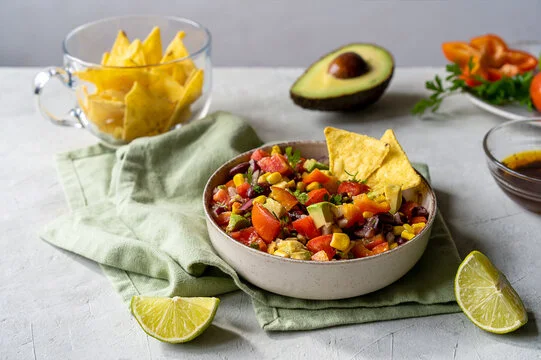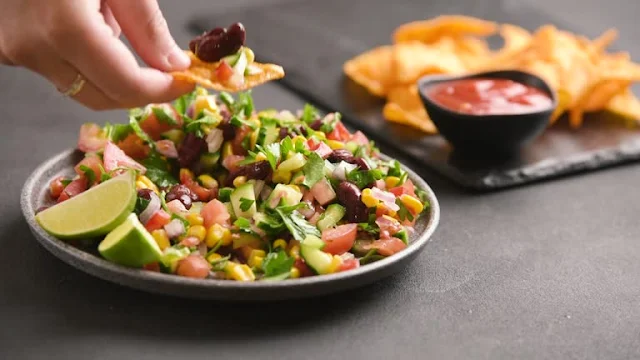Fry Jacks Recipe: A Delightful Belizean Breakfast Treat
Fry jacks are a beloved breakfast staple in Belizean cuisine, cherished for their golden, crispy texture and versatility. These puffy, fried dough triangles are similar to beignets or sopapillas but with a unique charm that makes them stand out. Perfect as a savory or sweet dish, fry jacks pair wonderfully with eggs, beans, and cheese, or drizzled with honey or dusted with powdered sugar for a sweet treat.
In this article, you’ll learn how to make authentic Belizean fry jacks step by step. Whether you’re craving a taste of the Caribbean or looking for a quick, satisfying breakfast, this fry jacks recipe will hit the spot.
Why Fry Jacks Are a Must-Try
- Simple Ingredients: Fry jacks are made with pantry staples, making them an easy recipe to whip up anytime.
- Quick to Prepare: The dough comes together in minutes and cooks quickly in hot oil.
- Customizable: Enjoy them savory or sweet—fry jacks can be adapted to suit your cravings.
- Cultural Delight: A quintessential part of Belizean cuisine, fry jacks bring a taste of the Caribbean to your kitchen.
Ingredients
To make fry jacks, you’ll need:
- 2 cups all-purpose flour
- 1 teaspoon baking powder
- ½ teaspoon salt
- 1 teaspoon sugar (optional)
- 1 teaspoon vegetable oil or melted butter
- ½ cup warm water
- Vegetable oil for frying
Optional toppings:
- Honey, powdered sugar, or cinnamon for a sweet version
- Refried beans, cheese, or eggs for a savory version
Step-by-Step Instructions
Step 1: Prepare the Dough
- Mix the Dry Ingredients: In a large mixing bowl, combine the flour, baking powder, salt, and sugar (if using). Stir until evenly distributed.
- Add the Fat: Add the vegetable oil or melted butter to the dry ingredients. Use your fingers or a fork to incorporate it into the flour mixture until it resembles coarse crumbs.
- Add Water Gradually: Slowly pour in the warm water, mixing with a spoon or your hands until the dough comes together. It should be soft but not sticky.
Step 2: Knead the Dough
- Knead on a Floured Surface: Turn the dough onto a lightly floured surface and knead for 3-5 minutes until it becomes smooth and elastic.
- Rest the Dough: Cover the dough with a clean kitchen towel or plastic wrap and let it rest for 15-30 minutes. This allows the gluten to relax, making it easier to roll out.
Step 3: Shape the Fry Jacks
- Roll Out the Dough: Divide the dough into 4 equal portions. Roll each portion into a ball and flatten it with a rolling pin into a thin circle, about ¼ inch thick.
- Cut into Triangles: Use a knife or pizza cutter to slice each circle into 4-6 triangular pieces.
Step 4: Fry the Dough
- Heat the Oil: In a deep skillet or pot, heat about 2 inches of vegetable oil over medium heat until it reaches 350°F (175°C).
- Test the Oil: Drop a small piece of dough into the oil. If it sizzles and rises to the surface, the oil is ready.
- Fry the Triangles: Carefully place a few triangles of dough into the hot oil, avoiding overcrowding. Fry for about 1-2 minutes on each side until they puff up and turn golden brown.
- Drain Excess Oil: Remove the fry jacks with a slotted spoon and place them on a plate lined with paper towels to absorb excess oil.
Serving Suggestions
Fry jacks are incredibly versatile and can be served in a variety of ways:
- Savory: Pair with scrambled eggs, refried beans, or cheese for a hearty breakfast.
- Sweet: Drizzle with honey, sprinkle with powdered sugar, or serve with a side of jam for a dessert-like treat.
- Authentic Belizean Style: Serve with fried fish, stewed chicken, or avocado for a traditional Belizean meal.
Tips for Perfect Fry Jacks
- Don’t Overwork the Dough: Knead just until smooth—over-kneading can make the dough tough.
- Cut Evenly: Uniform pieces ensure even cooking.
- Maintain Oil Temperature: If the oil is too hot, the fry jacks will brown too quickly; if it’s too cool, they’ll absorb too much oil.
- Serve Fresh: Fry jacks are best enjoyed warm and freshly made.
Variations
- Coconut Fry Jacks: Substitute some of the water with coconut milk for a subtle tropical flavor.
- Whole Wheat Fry Jacks: Use whole wheat flour instead of all-purpose flour for a heartier version.
- Stuffed Fry Jacks: Roll out the dough thinner, place a filling like cheese or beans in the center, fold, and seal the edges before frying.
Storage and Reheating
- Refrigeration: Store leftover fry jacks in an airtight container in the refrigerator for up to 2 days.
- Reheating: Reheat in a toaster oven or air fryer to restore their crispiness. Avoid microwaving, as it can make them soggy.
Why You Should Try This Recipe
Fry jacks are more than just a breakfast dish—they’re a slice of Belizean culture that’s both comforting and delicious. Their light, airy texture and endless versatility make them a standout addition to any meal. Whether you’re exploring Caribbean cuisine or simply looking for a new breakfast favorite, fry jacks are sure to impress.
Conclusion
This fry jacks recipe is an easy, delightful way to bring the flavors of Belize into your home. With just a few simple ingredients and steps, you can create a dish that’s perfect for breakfast, brunch, or even a snack. Whether served sweet or savory, fry jacks are guaranteed to become a favorite in your kitchen.
So roll up your sleeves and give this fry jacks recipe a try—you won’t be disappointed
































